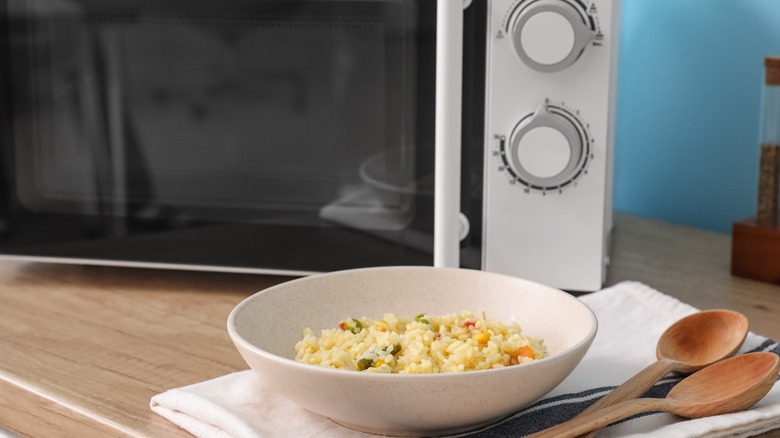The Best Way To Freeze Cooked Rice
Fresher is always better — or is it? Although you probably wouldn't choose congealed leftovers over a plate of just-made fried rice, there are advantages to frozen fare, like convenience and longevity. While rice is undoubtedly delicious and a good source of fiber, protein, and nutrients (via Healthline), it takes time to cook — time that you might be lacking. Luckily, you can freeze rice, and we'll tell you the best way to do it.
According to FoodSafety.Gov, you can store plain cooked rice in the freezer for up to one month, extending its expiration date from the four days it would keep in the refrigerator. However, there are a few things you should be aware of before freezing your grains and cereals.
Freezing and thawing rice (or any food, for that matter) can often change composition and flavor. In fact, the Journal of Food Science found that reheated rice tends to become drier, harder, and in some cases, even stickier. However, when stored properly, it's less likely to deteriorate. So, how exactly should you be freezing rice?
The key is to undercook slightly and freeze flat
White, brown, red, black, or wild, you can freeze any variety of rice. But, making freezer-ready rice relies heavily on one key cooking tip. According to Taste of Home, you should slightly undercook rice in order to avoid overcooking it when it's heated again later.
Next, it should go without saying that you should always let food cool completely prior to freezing since extremes in temperature can impact taste and texture. For the best result, lay rice on a baking sheet for about a half hour. Once cooled, Simply Recipes recommends adding portions of rice to Ziploc bags and stacking them flat in the freezer, saving space and making thawing a lot easier.
As for reheating, break rice into pieces and add it directly to recipes like soups and stews. Alternatively, you could also let the grains thaw beforehand. Allrecipes advises tossing the frozen rice blocks into the microwave for a few minutes, but you can also steam them in a saucepan. Whatever you do, don't thaw at room temperature. This will lead to gummy rice, and nobody wants that.

